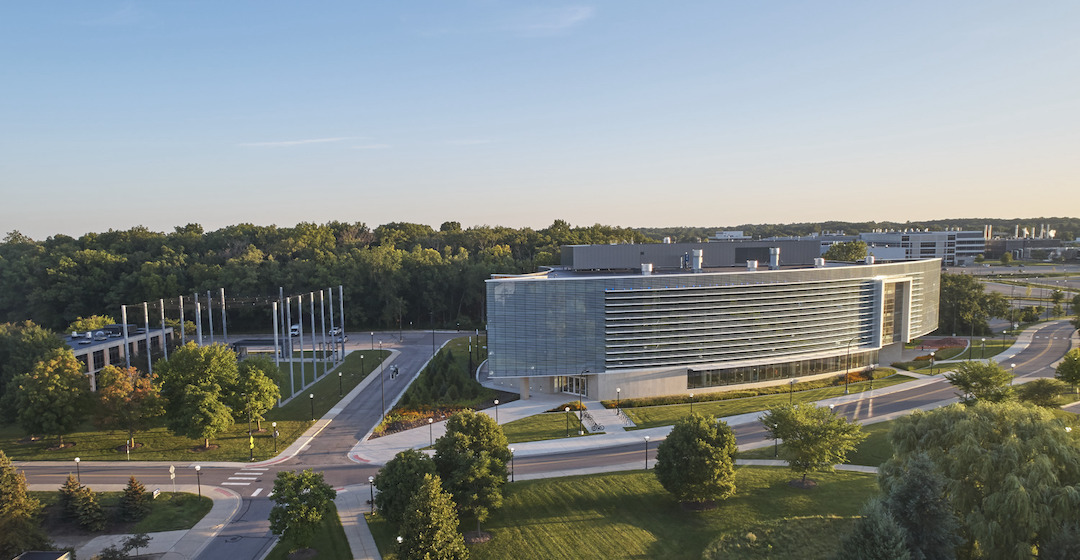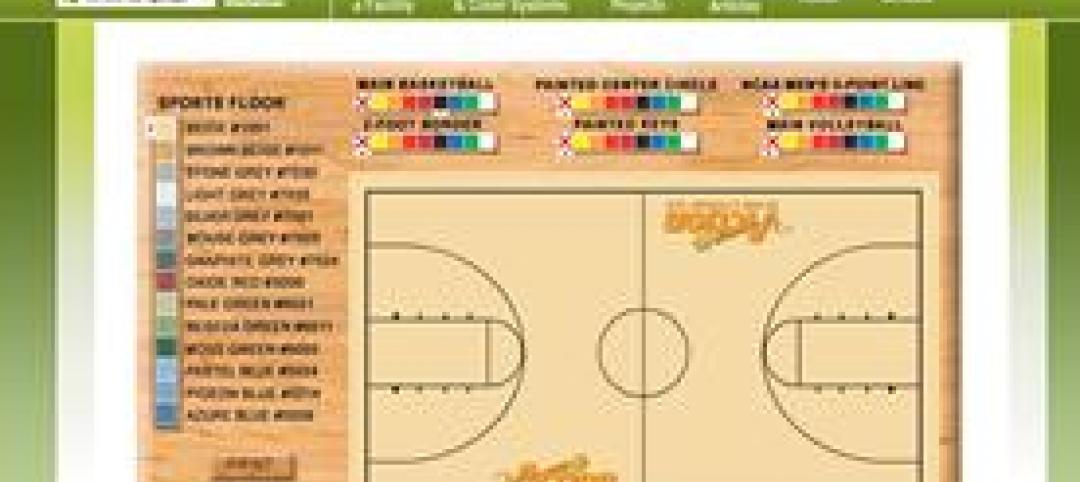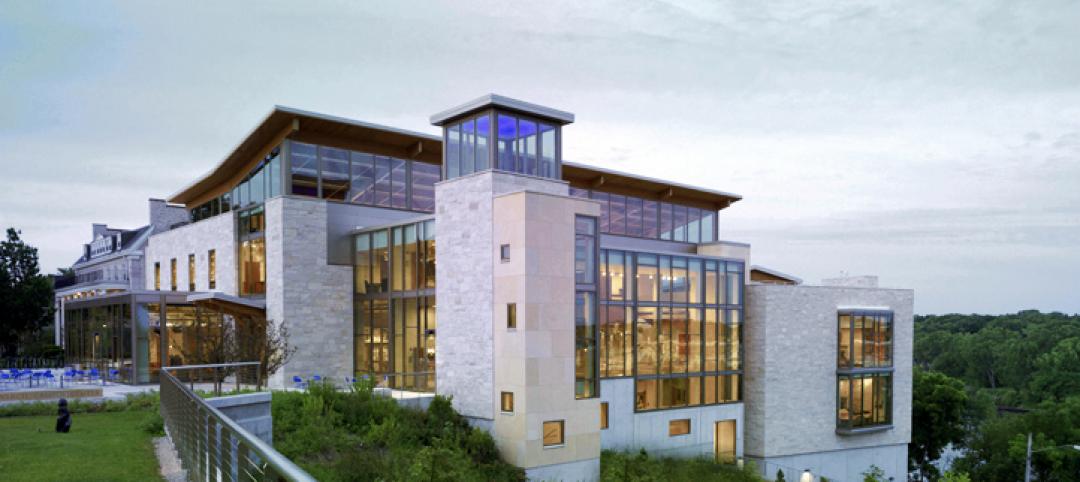The Ford Robotics Building has completed and opened on the University of Michigan (U-M) campus. The $75 million project represents a singular new home for the university’s relationship with Ford and acts as a showcase for robotics research, cross disciplinary collaboration, and innovative industry/education collaboration.
Located on the University of Michigan North Campus, the building anchors the west end of a Michigan Avenue mobility testbed that begins in Detroits Corktown neighborhood and runs through Dearborn to Ann Arbor. The four-story, 134,000-sf project is an interdisciplinary center for mathematics, engineering, and computer programming faculty and researchers. The facility will be home to researchers that were previously spread across 23 separate buildings and is also the first robotics facility to co-locate an industry team (Ford’s mobility research center) with a university’s robotics leadership.
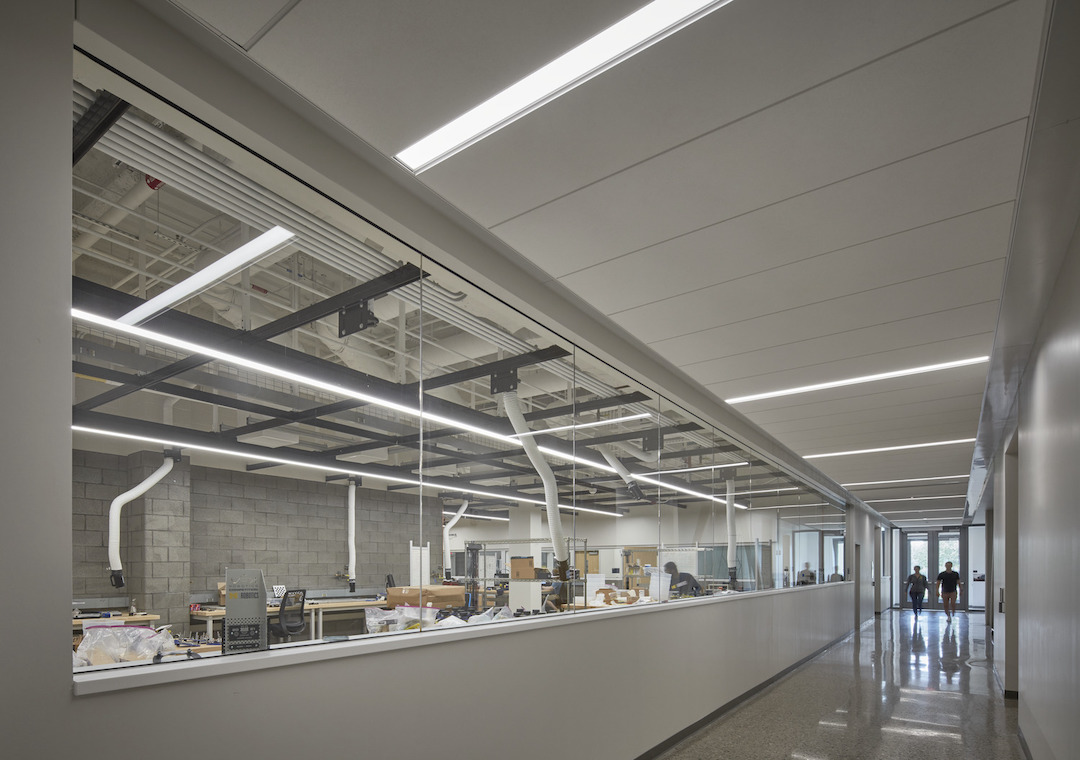
HED, in an effort to reflect a robotics program incorporates both theory and making, designed the building to appear both extroverted and enclosed simultaneously. From the outside, the most striking feature is the glass-clad facade that curves along Hayward Street. Composed of large bands of fritted glass with 30-inch-deep sunshades spaced 42 inches apart, the south-oriented glass wall allows diffused daylight deep into the building interior. The facade also allows visitors to see the activities occurring within.
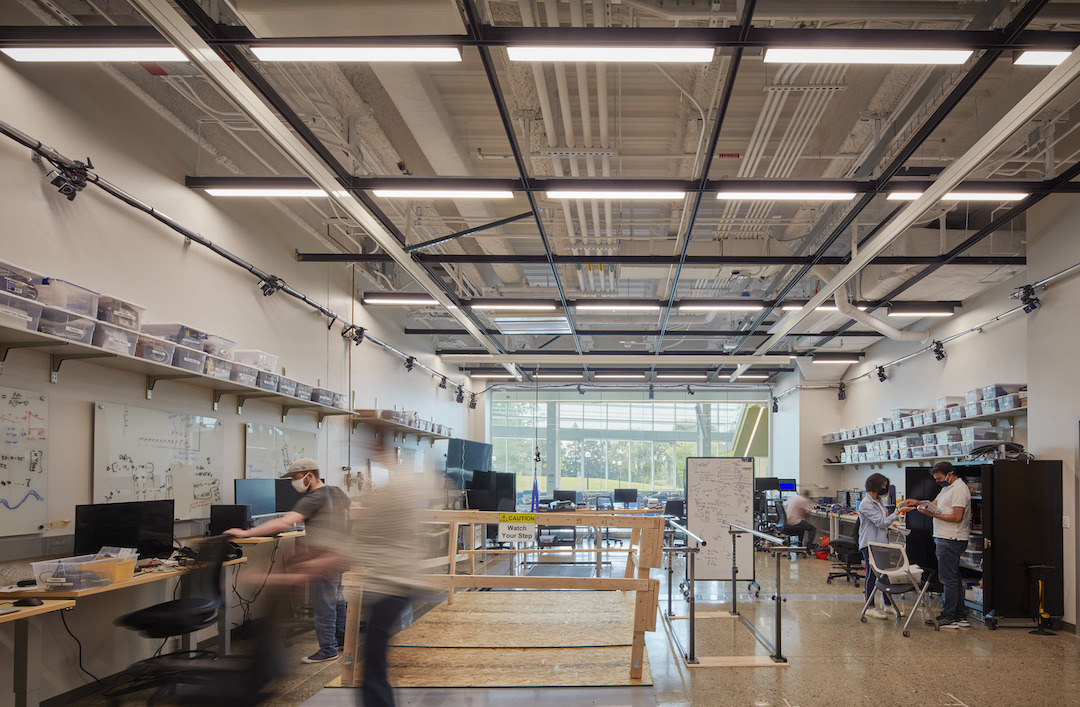
Upon entry, visitors arrive within a four-story atrium defined on one side by the curved smooth-facing glass wall and balconies for the top three floors. The atrium is designed for a wide variety of uses and special events with a cafe, large-scale video screen, and a sophisticated sound system. The atrium is heated through displacement ventilation. Researchers all enter the labs via a shared team collaboration space, ensuring chance encounters, interaction, and collaboration between them.
HED designed the Ford Robotics Building to promote proximity and spontaneous interaction between students, faculty, researchers, and visiting industry professionals. The building includes the new hub of the U-M Robotics Institute on the first three floors and Ford’s robotic and mobility research lab on the fourth floor.
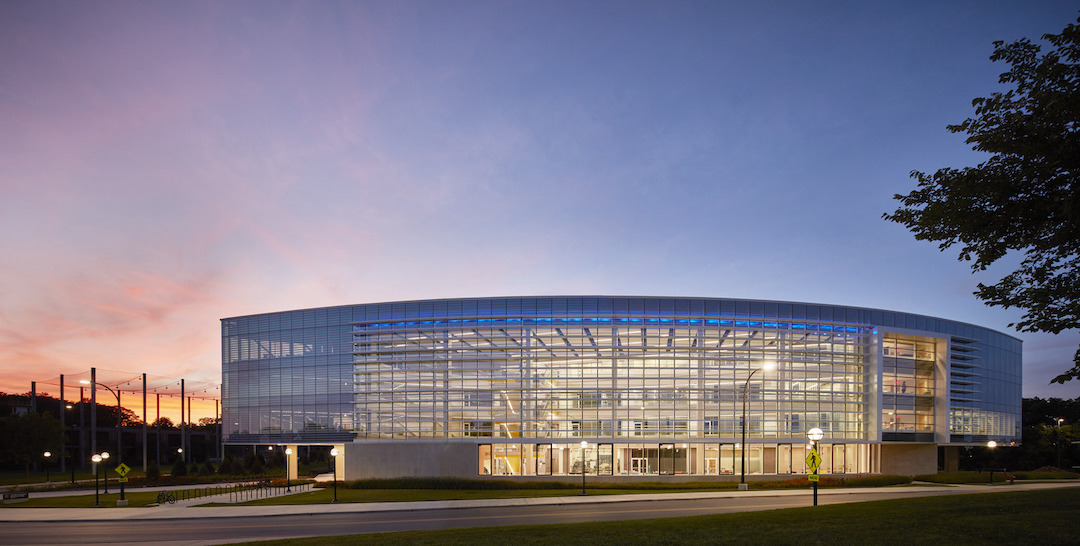
The custom U-M research labs are designed for robots that fly, walk, roll, and augment the human body. Multiple labs are incorporated within the building, including the Ronald D. And Regina C. McNeil Walking Robotics Laboratory for developing and testing legged robots. This specific lab has an in-ground treadmill that can hit 31 mph and a 20% grade, as well as carry obstacles to test walking robots that could aid in disaster relief and lead to better prosthetics and exoskeletons. A rehabilitation lab is designed for advanced prosthetics and robotic controls with a movable “earthquake platform” that can tilt in any direction while force-feedback plates measure ground contact.
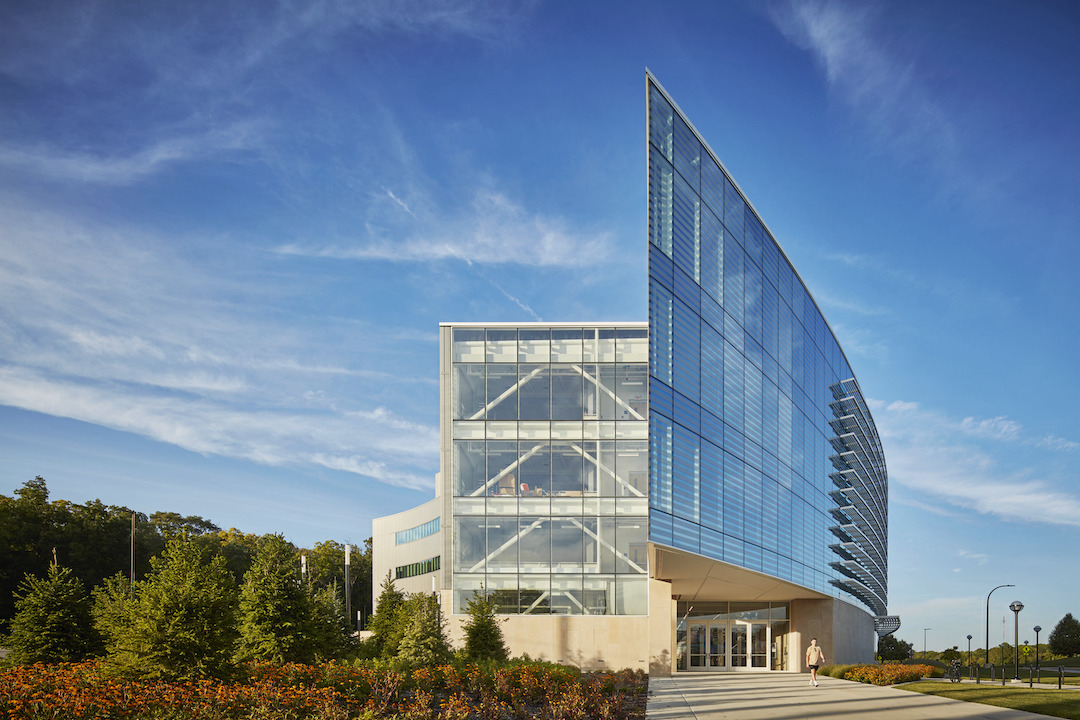
A three-story fly zone allows for the testing of drones and other autonomous aerial vehicles indoors. An outdoor Mars yard was designed with input from planetary scientists at U-M and NASA to enable researchers and student teams to test rover and lander concepts on a landscape that mimics the Martian surface. An AI-designed “robot playground” outdoor obstacle course is designed for testing robots on stairs, rocks, and water surrounded by motion capture cameras. A high-bar garage space for self-driving cars allows for teams to test connected and automated vehicles in urban and suburban environments. Ford roboticists occupy the building’s fourth floor research lab and offices.
The Ford Robotics Building is expected to achieve LEED Gold certification. HED provided architecture, landscape architecture, interior design, and structural, mechanical, and electrical engineering services on the project.
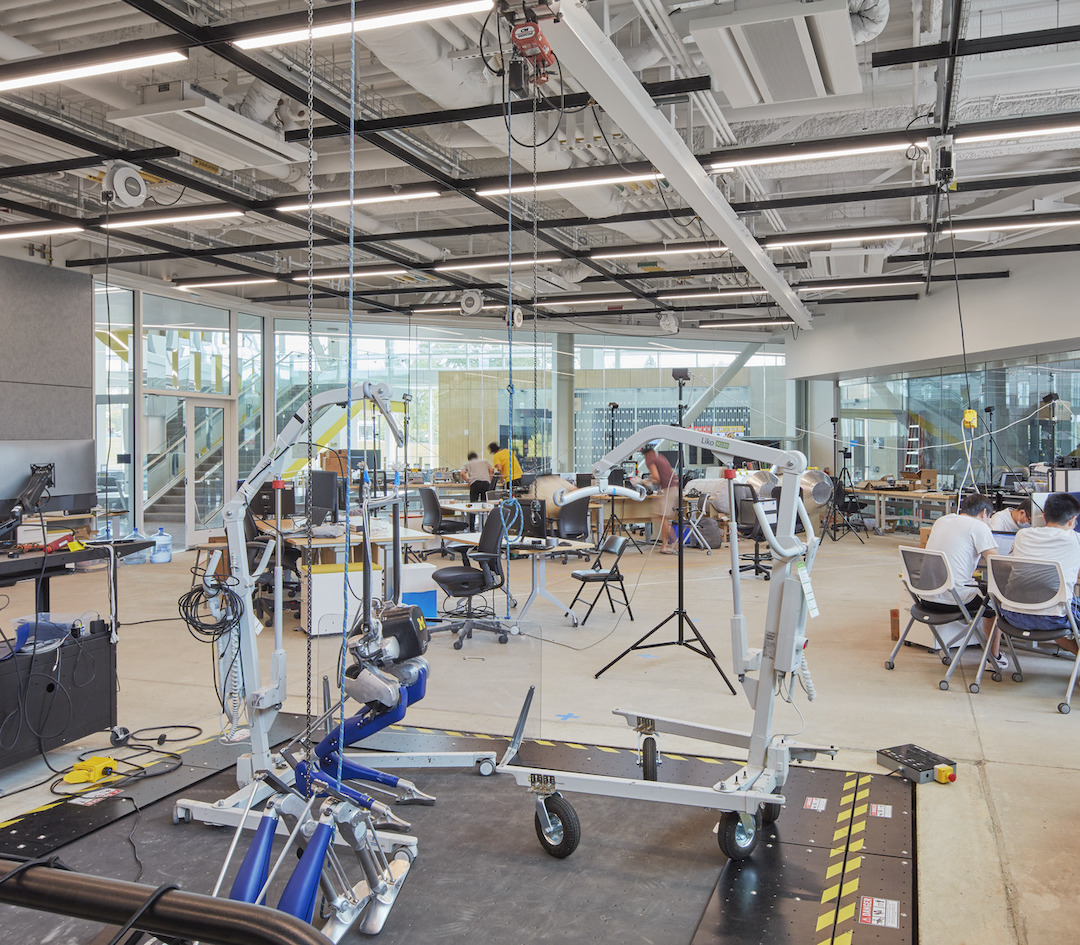
Related Stories
| Oct 14, 2011
University of New Mexico Science & Math Learning Center attains LEED for Schools Gold
Van H. Gilbert architects enhances sustainability credentials.
| Oct 12, 2011
Bulley & Andrews celebrates 120 years of construction
The family-owned and operated general contractor attributes this significant milestone to the strong foundation built decades ago on honesty, integrity, and service in construction.
| Sep 30, 2011
Design your own floor program
Program allows users to choose from a variety of flooring and line accent colors to create unique floor designs to complement any athletic facility.
| Sep 23, 2011
Okanagan College sets sights on Living Buildings Challenge
The Living Building Challenge requires projects to meet a stringent list of qualifications, including net-zero energy and water consumption, and address critical environmental, social and economic factors.
| Sep 14, 2011
Research shows large gap in safety focus
82% of public, private and 2-year specialized colleges and universities believe they are not very effective at managing safe and secure openings or identities.
| Sep 7, 2011
KSS Architects wins AIA NJ design award
The project was one of three to win the award in the category of Architectural/Non-Residential.
| May 18, 2011
Major Trends in University Residence Halls
They’re not ‘dorms’ anymore. Today’s collegiate housing facilities are lively, state-of-the-art, and green—and a growing sector for Building Teams to explore.
| May 18, 2011
Raphael Viñoly’s serpentine-shaped building snakes up San Francisco hillside
The hillside location for the Ray and Dagmar Dolby Regeneration Medicine building at the University of California, San Francisco, presented a challenge to the Building Team of Raphael Viñoly, SmithGroup, DPR Construction, and Forell/Elsesser Engineers. The 660-foot-long serpentine-shaped building sits on a structural framework 40 to 70 feet off the ground to accommodate the hillside’s steep 60-degree slope.


